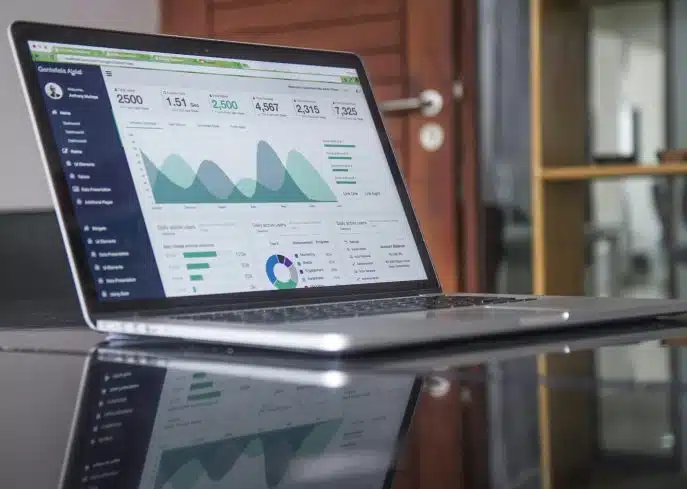For business owners, it’s important to know what is a line of credit and how it differs from a business loan. It goes a long way in helping you pick the right type of funding for your business.
Funding plays a very important role in the growth of any business. Access to funds ensures a smooth running of your operations. This then improves your performance and leads to better profits.
And for any business owner, there are two major ways to finance your business.
You could take out a loan or you could get funding through a line of credit.
Many small business owners face the challenge of choosing between these two funding options to manage their cash flow and support business growth.
Although they perform similar functions, both funding methods are not the same. They have different forms and structures. As a result, one type of financing will be more suitable for certain situations than the other.
Knowing this difference is key. It helps you decide which of the two to choose when you need an external source of cash.
That’s what this article will show you.
What is a Business Loan?
A business loan is a fixed amount of money that you borrow from a financial institution that you’ll pay back at a later date. Here’s how a business loan works: you typically receive a lump sum amount or money upfront, which is then repaid in instalments (with interest) over a set repayment schedule. Business loans are commonly used for purposes such as business acquisition, start up costs, capital investment, purchasing commercial vehicles, equipment purchases, and refinancing. Business term loans and term loans are popular options, especially for established businesses, while larger business loans are often used for significant investments and expansion.
How much you can borrow depends on your credit rating, annual revenue, and your relationship with the lender. Lenders may require a minimum annual revenue (often around $200,000 or more) as part of the qualification criteria for business loans.
In some cases, you may need to tell the lender what you want to use the loan for. You could also be asked to provide collateral or a personal guarantee before the loan is approved, as some loans require collateral or other forms of security. Everything depends on the initial agreement you made with the lender.
Business loans are best used to finance large, one-time projects that require costs to be paid upfront, such as business acquisition, start up costs, capital investment, or purchasing commercial vehicles. But you can also get a loan to purchase new equipment or to open up new office locations.
Simply put, a business loan may be more suitable if you’ll use it to expand your operations and increase growth.
What is a Line of Credit?
If we were to compare a line of credit vs business loan, know that the former is more flexible. A line of credit works as a revolving credit facility, allowing you to borrow, repay, and borrow again up to your credit limit, making it a flexible financial safety net for managing business cash flow.
With a line of credit, the lender grants you access to a certain amount of money based on your credit limit. You can withdraw funds as needed during the draw period, taking out only what you require and paying it back however you want to. That means you can choose to pay off the full amount you borrow at the end of the month or only the bare minimum required.
Also, you only need to pay interest on the money you withdraw.
Now, as you repay the money you withdraw, your limit gets replenished. This makes it possible to draw again from it without seeking approval from the lender.
A line of credit can also be used as a short term top up to cover immediate expenses or seize business opportunities, such as purchasing inventory or covering staffing costs. Lines of credit are ideal for little, short-termed business expenses. They come in handy when you need to buy extra inventory or to pay salary during seasonal lulls. They are also useful in case of an emergency. Additionally, lines of credit are often used to manage working capital and help businesses handle cash flow fluctuations.
6 Key Differences Between Lines of Credit and Business Loans
If you are wondering whether you should get a small business loan vs a line of credit, you must understand the six key differences between them.
Interest rate and fees
Business loans typically have a higher interest rate than lines of credit. But this depends largely on the lending institution and your credit score. Interest rates tend to be fixed for business loans, providing predictable payments, while lines of credit often have variable rates that can change over time.
In addition, lines of credit have a monthly fee whether you draw from the account or not.
Loan Size
The amount of money you can borrow depends on your credit rating and the lender. However, business loans are often bigger than credit lines. This is often true regardless of credit rating. When comparing both loans, business loans generally offer higher borrowing limits but may come with higher costs and stricter requirements than lines of credit.
Repayment Schedule
A business loan’s repayment schedule is more strict and rigid. You have to pay back the money you borrow in fixed sums over a specified period of time. You also have to start making payments as soon as you get the loan.
Meanwhile, lines of credit have a more flexible repayment schedule. You only need to pay back after drawing funds. And you can pay the bare minimum at different times or the lump sum you borrowed at once. At the end of the loan or credit line, any remaining balance may need to be paid in full or could be converted into a new loan, depending on the lender’s terms.
Requirements
The requirements for lines of credit are more relaxed than those for business loans.
In order to get a business loan approved, you will need to provide information on what you want to do with the money. You will also tell the lender how you plan to finance the loan. But you don’t need to provide such details to get a line of credit.
Keep in mind that the requirements for both funding types depend on the lender. Both loans may have different eligibility criteria, and online lenders can be an option for small business owners with bad credit, though this typically increases the lender’s risk and may result in higher interest rates and fees.
Uses
Business loans are taken for specific, one-time finances. They are ideal if you want to carry out a major project and need a sizable amount of money.
A business line of credit, on the other hand, is often used for smaller business expenses. It allows you to get funding without committing to a lump sum. Business credit cards are another unsecured option for managing business cash flow, but they tend to have higher interest rates compared to lines of credit.
Reapplication
If it turns out that your current business loan isn’t enough for what you need it for, you’ll need to make another application to get additional funds.
But with a line of credit, you only draw money based on how much is made available by the lender. You free up more money to borrow when you pay back what you owe. And you don’t need to reapply to withdraw the money.
Managing Business Debt
Effectively managing business debt is essential for maintaining healthy business finances and ensuring long-term stability. Whether you’re using business loans or a business line of credit, understanding how these tools impact your cash flow and overall financial health can make a significant difference in your company’s success.
When you take out a business loan, it’s important to match the loan term and repayment schedule with your business’s cash flow projections. This helps you avoid cash flow gaps and ensures you can meet your repayment obligations without straining your operations. For example, if you use a small business loan to fund large purchases like equipment or commercial vehicles, make sure you have a clear plan for generating enough revenue to cover the repayments as the loan term begins.
A business line of credit, on the other hand, offers ongoing access to funds up to your approved credit limit. This revolving line of credit is ideal for managing short-term cash flow dips, funding inventory costs, or covering unexpected expenses. However, it’s crucial to keep an eye on your outstanding debt and avoid maxing out your credit line, as this can lead to accruing interest and make it harder to regain control of your business finances.
Maintaining a strong credit history and good credit scores is also key. Lenders, including traditional banks, credit unions, and online lenders, often offer lower interest rates and better terms to businesses with solid credit profiles. This can save you money over time and give you more flexibility when you need to borrow money for business opportunities or to fund inventory costs.
It’s also wise to build an emergency fund to cover unforeseen expenses, such as funding repairs or seizing new business opportunities. Having this financial cushion can reduce your reliance on borrowing and help you avoid taking on unnecessary debt.
When considering business financing, weigh the pros and cons of secured loans versus unsecured debt. Secured loans may offer lower interest rates but require collateral, such as business assets, which could be at risk if you’re unable to repay. Unsecured options, while more accessible, often come with higher interest rates and stricter eligibility requirements.
Before committing to any business loan or line of credit, carefully review the terms and conditions, including the interest rate, repayment schedule, and any associated fees. Make sure your business can comfortably afford the repayments, and don’t hesitate to seek advice from financial experts or business advisors. They can help you assess your cash flow needs, review your credit profile, and explore the best financing options for your situation.
Remember, managing business debt is about being proactive and disciplined. Regularly monitor your outstanding balances, make timely repayments, and use credit only for eligible purchases that support your business’s growth—such as office renovation, marketing campaigns, funding rent for a co-working or pop-up space, or a shop fit out.
Finally, always conduct your own enquiries and research before choosing a lender or financing product. By understanding how does a line of credit work and how business loans can support your goals, you’ll be better equipped to make informed decisions that align with your company’s objectives.
In summary, responsible use of business loans and business lines of credit can provide a useful safety net and help you fund large purchases, manage cash flow needs, and seize new business opportunities. By prioritizing debt management, maintaining a good credit history, and making informed choices, you can support your business’s growth and achieve long-term financial stability.
Get the Right Funding For Your Business
When choosing to fund your business with either a loan or a line of credit, you need to ask yourself three questions:
- How much do you need?
- What do you need it for?
- How do you want to repay the money?
Generally, a business loan is suitable when you need larger sums for specific purposes. Meanwhile, a line of credit is ideal when you need smaller sums with flexible repayment plans.
If you need further assistance, Unsecured Finance Australia is here to help. Apply online and you can receive your approval within 24 hours.
Find out more by taking a look at our unsecured business loans—funding can be used for a range of business needs, such as equipment, inventory, or even renting a co working space. For more details, see the different types of business loans.




